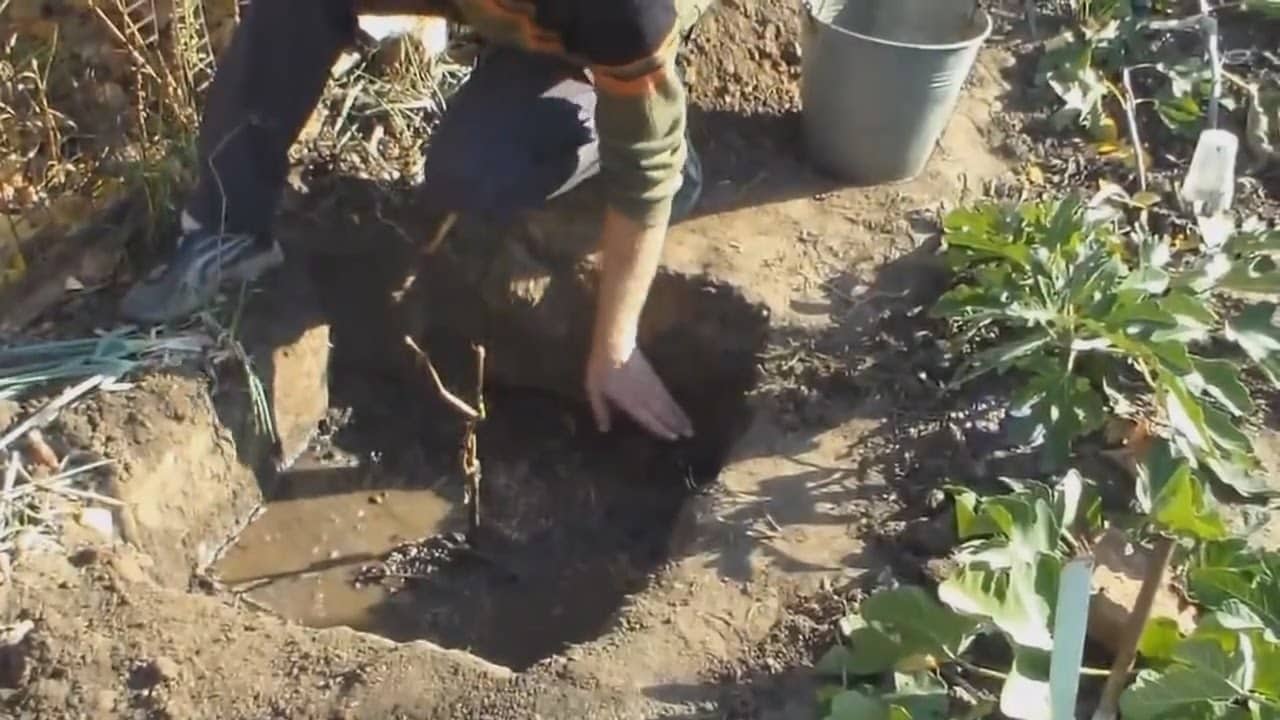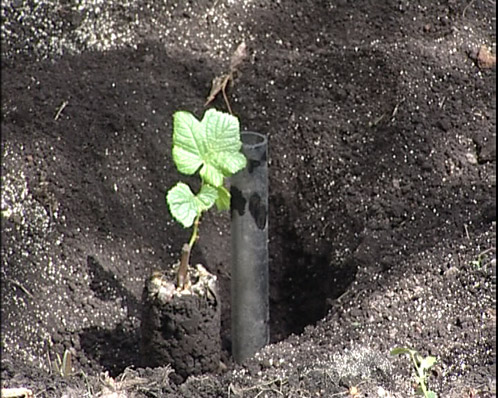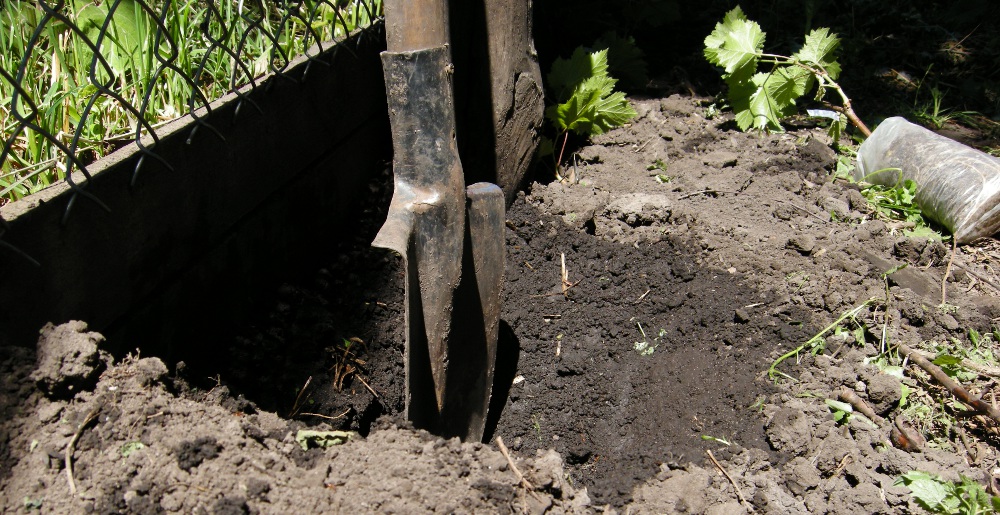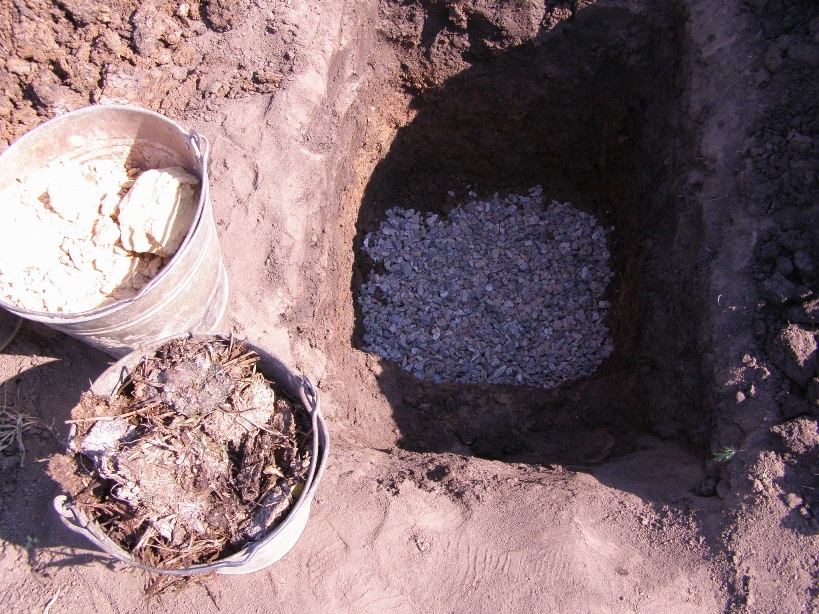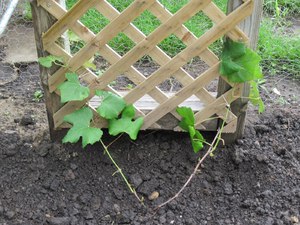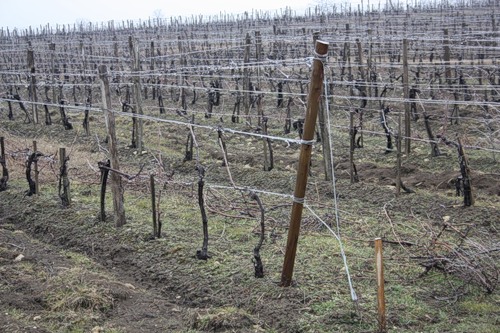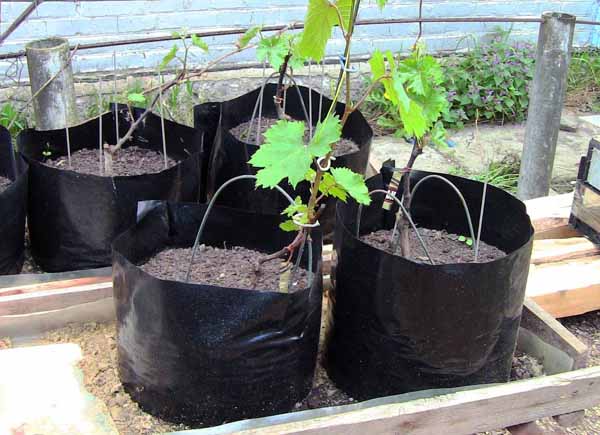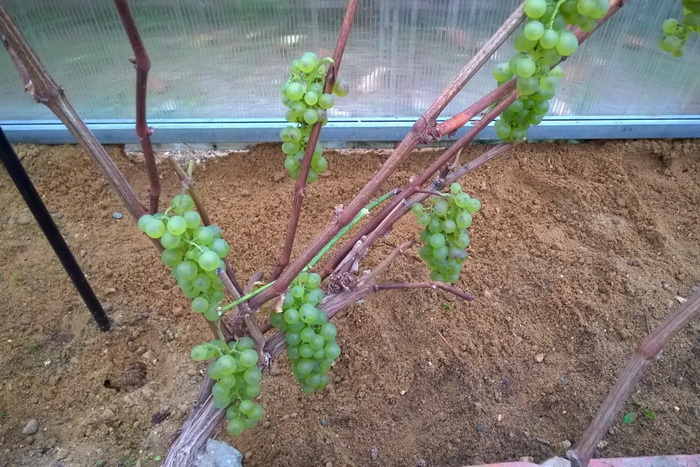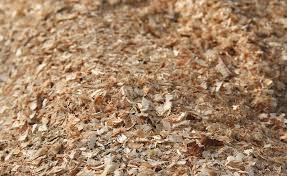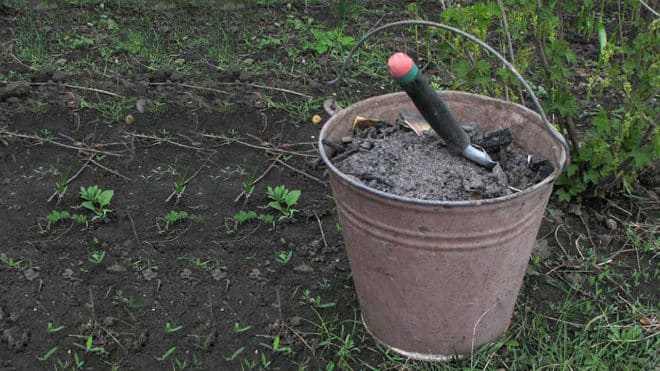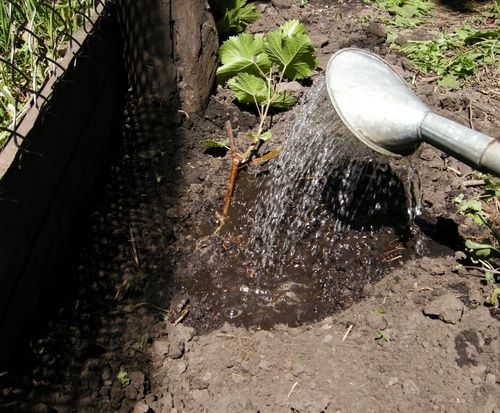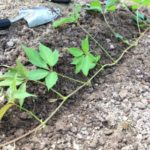When planning to grow grapevines on a summer cottage, a number of features must be observed. To get a good harvest, you need not only to choose a variety suitable for the area, but also to constantly care for the plant at each stage of growth. Planting grapes should be carried out taking into account the specifics of the soil, climatic conditions and variety of fruits.
- Recommended timing
- in spring
- In summer
- in autumn
- Selecting a location
- What soil and planting depth is needed?
- Methods of planting seedlings
- Classical
- On the trellis
- On the ridges
- In the greenhouse
- In containers
- Moldavian
- Thickening
- Features of planting grapes in the lowlands
- Caring for grapes after planting
- Fertilizers
- Watering
- Treatment
- Formation
Recommended timing
Certain grape varieties should be planted in different seasons. The right time for planting berries helps to improve the quality and quantity of the harvest. You can start growing vines in any season, except winter.
in spring
Planting grapes in spring is allowed from late April to mid-May. As a rule, annual plants with woody trunks are planted during this period.
The right time for planting occurs when the air temperature reaches 15 degrees and the soil warms up to 10 degrees.
The likelihood of return frosts in the spring is low, so the risk of seedlings dying from unsuitable temperatures is minimal. The planted plants take root well, since the soil, after the snow melts, is saturated with moisture and contains the nutritional components necessary for intensive development.
In summer
In June-July, green vegetative grapes are planted. For planting, it is necessary to select seedlings with roots that have 3 or more branches. Before planting directly, you need to pour 2 buckets of water into the prepared hole to saturate the dried soil with moisture.
in autumn
Autumn planting of seedlings is carried out from the beginning of October until the onset of the first cold weather. Before planting, it is necessary to select annual seedlings with developed roots. Green shoots about 20 cm long should grow on the trunk. 2 days before transferring to the ground, the seedling must be soaked and the top cut off. The lower roots are trimmed by 2-3 cm.
There are a number of advantages to planting grapes in the fall. These include the following:
- At the beginning of autumn, special seedlings are prepared for sale.In the spring, seedlings that were not sold last season may be sold, so there is a risk of purchasing low-quality planting material.
- The soil is best prepared for planting on the eve of winter. The soil contains nutrients accumulated during the summer, as well as a sufficient amount of moisture.
- Before the onset of the first spring warming, seedlings have time to take root and adapt to new growth conditions. During spring sunny days, plants will begin to actively develop.
To protect young seedlings during frosts, it is necessary to cover the ground in the area where the roots are located with a dense layer of mulch. In this case, air access should be ensured to prevent overheating.
Selecting a location
When choosing a suitable place for grapevines on the site, it is necessary to ensure constant natural light for the seedlings. Also, the place should be protected from through winds from the north side. You can plant grapes next to buildings that will act as protection from blowing.
If there are no suitable buildings nearby, you can build a fence to enclose the bushes. A screen made of dark-colored boards is suitable as a fence. The fence will create protection from drafts and, heating up from the sun's rays, will give off heat to the plants.
In most cases, you should place the grapes with shelter against the south wall, but this location is not suitable for all areas. In the northwestern regions of the country, the earth warms up slowly and does not contain a large amount of organic matter, so it is better to place the seedlings on the western or southwestern side, protecting the plantings with covering material.
What soil and planting depth is needed?
Before planting grapes in open ground, you need to make sure that the soil is suitable in structure and composition for growing berries. The best option is soil with a high content of crushed stone or coarse sand, since such soil quickly warms up, allows air to pass through and is less susceptible to drought. Grapes grown on such soil have distinct taste characteristics.
The mechanical composition of the soil affects the formation of roots, the degree of their branching and the depth of penetration into the ground. The denser the soil, the longer the skeletal roots will form. The plant forms a powerful root system to overcome dense soil, therefore, when preparing a hole for a seedling, it is necessary to take into account that the structure of not only the top layer of the earth, but also the deeper layers is important.
Having determined the structure of the soil, you need to figure out how to properly plant a seedling in a hole. The planting hole is dug to a depth of 60 to 80 cm. The width of the hole should correspond to the depth.
Methods of planting seedlings
There are different ways to plant grapes. Planting options differ in the method of site preparation, the type of planting material used and other features.
Classical
The most common is the classic scheme. It involves sequentially performing the following actions:
- In the fall, several holes are dug up to 80 cm deep with a distance of at least 2 m from each other. It is necessary to prepare the hole in advance, since then the soil will begin to settle.
- A drainage layer 10 cm thick is laid at the bottom of the pit.
- The cuttings harvested in the fall are cut from below and kept for two days in a growth stimulator at room temperature.
- The cuttings are moved to a container of clean water to form roots and young shoots, after which they are grown in seedling pots.
- Seedlings with a closed root system are transferred to open ground when the ground warms to 16 degrees.
- The soil is covered with a layer of mulch and watered with plenty of warm water.
On the trellis
The structure of grapevines is similar to vines and requires support. Growing in wild conditions, the plant twines around nearby trees. To control the direction of growth, you should install a trellis, which can have a different shape and number of planes. The support consists of several pillars connected to each other with wire.
During the first years of the plant's life, it is enough to just tie the vines to the posts. With further growth, the grapes are placed on a horizontal trellis in such a way as to alternately wrap around both wires. If one support is missing, you can install another one, leaving about 40-45 cm between the rows.
On the ridges
The method of growing in beds is valued by gardeners for its low labor costs when fighting weeds and the rapid warming of the earth. To prepare the ridges, you need to follow these steps step by step:
- dig a trench 10 m long to a depth of 30 cm;
- fill the ditch with earth mixed with sand, crushed stone and fertilizers so that the beds rise 20-25 cm;
- protect the beds with covering material or cover with a dense layer of mulch;
- deepen the roots of the seedlings 40-45 cm from the surface of the beds.
In the greenhouse
The climatic conditions artificially created in the greenhouse are most favorable for the intensive growth and development of grapes. Due to the high temperature, the vines begin to ripen and bear fruit earlier.When planting in a greenhouse, it is necessary to prepare the soil by analogy with other methods. Cuttings should be rooted in advance in separate containers at room temperature.
The distance between plantings in the greenhouse should be at least 1.5 m between each bush. It is enough to water the plants at intervals of 1 time per week.
In containers
The container method prolongs the growing season of seedlings, which is most appropriate when grown in cool regions. The essence of the method is to plant seedlings that have formed roots in bags made of dense polyethylene without a bottom. The packages are placed inside a pallet or container covered with film.
Before the first buds form, seedlings must be kept warm. As the soil dries, the sprouts are watered generously. Grapes should be transferred to open ground after the risk of frost has disappeared.
Moldavian
Planting grapes according to the Moldavian method is used when there are vines more than 60 cm long. The growing process is carried out according to the following instructions:
- With the onset of spring, it is necessary to twist a ring from the vine and secure the turns with a rope.
- Having laid the vine in a prepared hole on the surface, leave 1-2 buds. To prevent them from drying out, a handful of earth is left above the end of the vine.
- By the autumn season, the vines grow and produce their first harvest the following year.
When planting several plantings according to the Moldavian scheme, it is necessary to maintain spatial isolation between the bushes. Free distance is required for the development and growth of bushes.
Thickening
In hot and dry weather conditions, a thickened growing method is used. Up to 7 grape bushes are planted on a square of land. This eliminates the need for tying and creating additional support.The main advantage of the thickening method is saving space on the site and reducing labor costs. The disadvantage is that in the absence of proper care, infectious diseases will arise on thickened bushes that can reduce yields.
Features of planting grapes in the lowlands
In the case of growing grapes in recessed areas, a number of features must be taken into account. Since precipitation accumulates in the lowlands, if there is a large amount of precipitation, additional watering is not required. To eliminate excess moisture, you should cover the soil in the area where the bushes are located with a layer of sawdust, which will partially absorb the liquid.
There is no need to construct wind protection in the lowlands, since the main air flows will pass over the location of the bushes. For the winter, it is enough to use standard covering material.
Caring for grapes after planting
The key to obtaining a large harvest is not only proper planting, but also subsequent care of the plants. Basic care for young grapes involves performing standard procedures, including fertilizing, watering, protective treatment and pruning.
Fertilizers
If, when transferring seedlings to open ground, fertilizing was immediately applied, then over the next 3-4 years additional fertilizers for grapes are not required. For intensive ripening, mature plantings need to receive nutrients that are not always present in the soil.
The fruits require the following components:
- Nitrogen. The element is responsible for the growth of foliage and shoots and is introduced into the ground in the spring, when the growing season begins.
- Phosphorus. At the very beginning of the grape blossoms phosphate fertilizers promote the appearance of new inflorescences and the ripening of clusters with a large number of berries.
- Potassium.With the onset of autumn, when it is necessary to accelerate the ripening of vines before the arrival of the first frost, the addition of potassium chloride is required, which stimulates fruit growth.
- Copper. Fertilizing with the addition of copper particles increases the resistance of shoots to cold and drought.
- Bor. The use of boric acid in the soil helps to increase the sugar content of the crop and accelerates the ripening process.
Watering
During the first year of development, a significant part of the seedlings may die due to lack of moisture in the soil. Developing roots require a constant supply of fluid to actively form.
The first watering after planting the seedlings is carried out 10-12 days later. It is recommended to water abundantly in the early morning or evening so that the moisture does not quickly evaporate under the influence of sunlight and high temperature if the grapes are planted in the warm season. Under each bush, pour 2-3 buckets of clean, settled water, warmed to room temperature.
The next watering is required after 2 weeks, provided there is no rain during this period. Each subsequent watering is carried out as the soil dries.
Treatment
With negative external influences, unsuitable climate or excessive soil moisture, there is a risk of developing infectious diseases or the appearance of harmful insects. To maintain productivity and combat sources of fruit infection, it is necessary to treat the bushes with drugs from the fungicidal and insecticidal categories. The use of drugs to repel pests is also allowed for preventive purposes.
Formation
To give a decorative and neat shape, the crowns of the bushes must be pruned. You can form a vine in spring or autumn.When pruning vegetation on the eve of winter, you should cover the bushes after the procedure to protect them from frost. With the onset of the first warming, the shoots will begin to grow rapidly and form young branches. The spring formation of the crown helps provide access to the sun and air to the fruits. During the warm season, the cut shoots have time to adapt and bring a good harvest by autumn.

